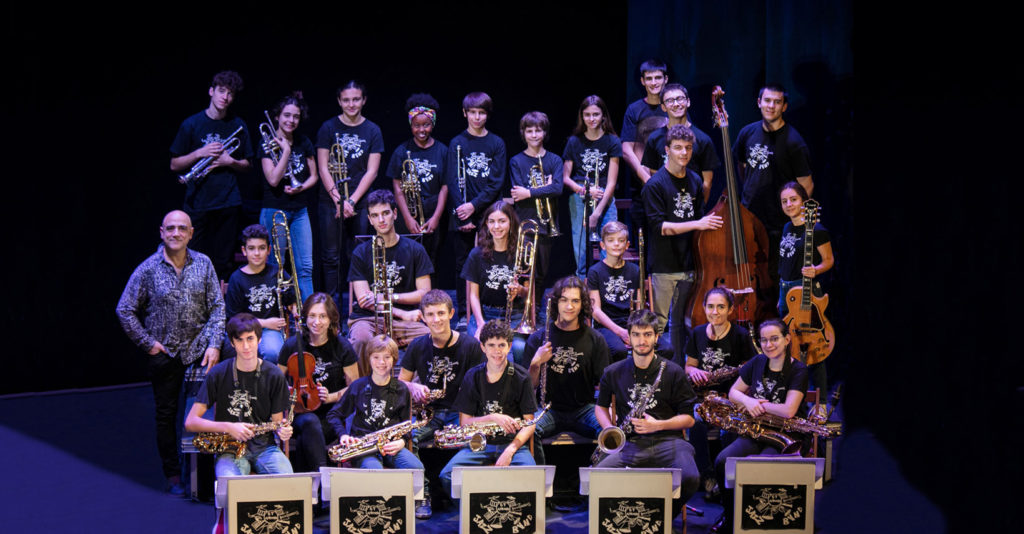
I found Sant Andreu Jazz Band through a video on YouTube in September 2016. In the very first video that I saw, Andrea Motis was singing In My Solitude backed by the Joan Chamorro Quartet and Orquestra Simfònica del Vallès. I was astonished. She was so young and had the expression of youth, but she was nevertheless so sophisticated. The setting was grand, like in a jazz ballad performed by Diana Krall backed by her usual jazz group and a string orchestra. Moreover, like Diana Krall, this young lady proved not only to be a vocalist – she also played a solo on trumpet. (Click the YouTube image below to enjoy the video.)
More astonishment would come. I soon found out that Andrea Motis was not alone. She was a member of Joan Chamorro’s creation, the Sant Andreu Jazz Band, a big band with children and teenagers playing music “with emphasis on a classic jazz repertoire with lots of swing” – later also a lot of wonderful Brazilian bossa nova. Along the way, I discovered hundreds of fabulous music videos on YouTube of the big band or parts of the band – often together with top professional musicians as soloists, and always with their leader, Joan Chamorro. Moreover, the young musicians often played more than one instrument, and many were good singers too. How could there be so many talented kids in this band?
I have published a number of articles examining the answer to this question and I will return here to some of the band’s features that I see as key factors. However, my focus this time is on the relationship between the band and us, the fans of the Sant Andreu Jazz Band. The question is – what is it about the band, and what is it about us, that make us love the band so much?
Boundaries
The fans have a deep and wide interest in the Sant Andreu Jazz Band. Joan Chamorro often expresses his gratitude for people’s interest, but he expresses himself as grateful for the interest in “our project”. These two words, “our” and “project”, indicate something important; a “project” indicates a wider concept than a “band” and using the word “our” indicates that he does not see it as his project alone. It belongs to a wider community.
What about the project? Does it have boundaries in terms of people involved? Do people have to be musicians within SAJB to be part of the project, and be part of the band right now – or should we understand “the project” in a much broader sense? To acknowledge the true nature and the importance of the project I believe it is the latter.
Joan Chamorro is the leader of the project and without him it would not exist. He was the originator and with his enthusiasm, ideas and creativity the project continues and develops all the time. As the leader of the project, Joan Chamorro is clearly part of it. (Read more in “Joan Chamorro”, Musik.pm 2019.)
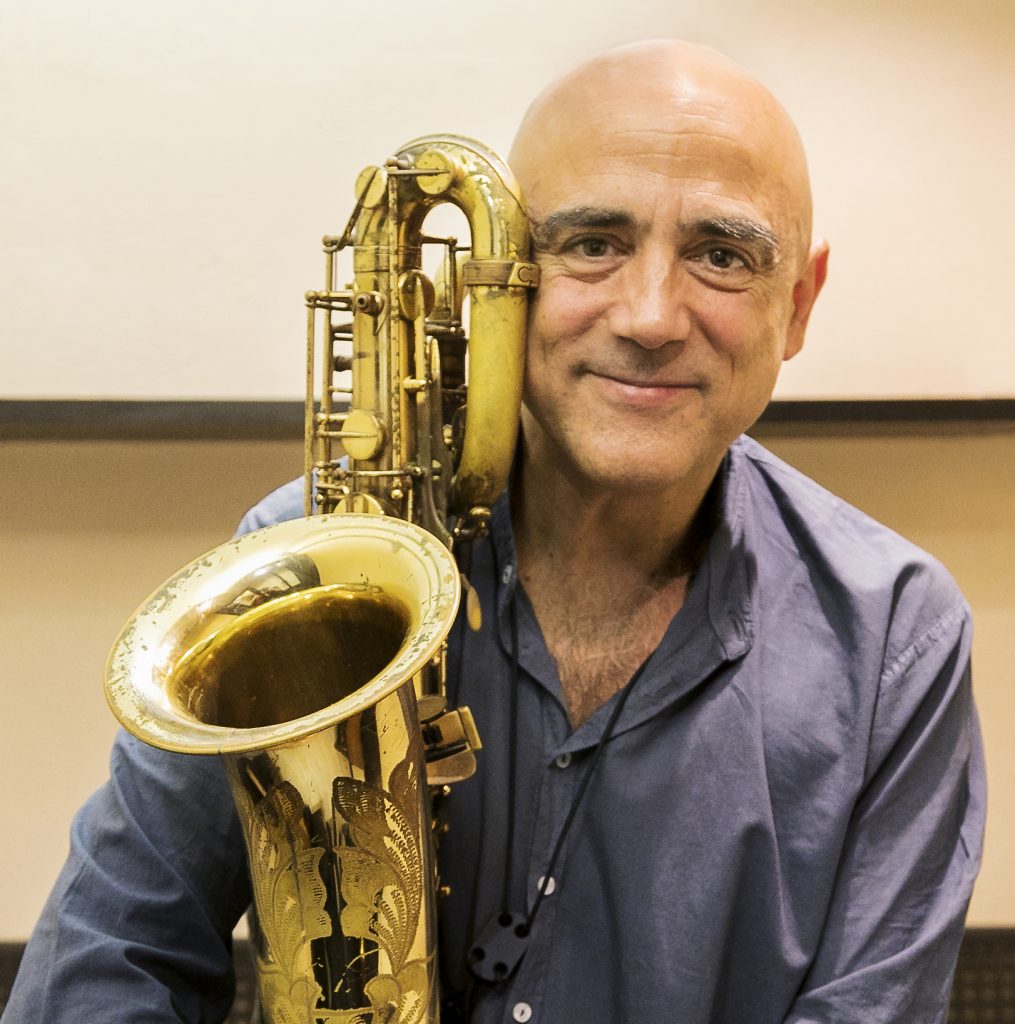
The young musicians of course also belong to the project. Fans often discuss who among the young musicians are still members of SAJB and who are not. However, I would argue that there is no sharp boundary. The musicians leave gradually through different stages, and can continue to play in one or several of Joan Chamorro’s many spin-off projects. They can even return to the big band as a guest. Sometimes they are officially announced as a guest, sometimes not (which tends to confuse those who want strict demarcations). However, what is important is that they remain part of a big musical network, with Joan Chamorro in the centre. That does not stop them from being part of other groups and networks too. (More about this in the article “Èlia Bastida”, Musik.pm 2019.)
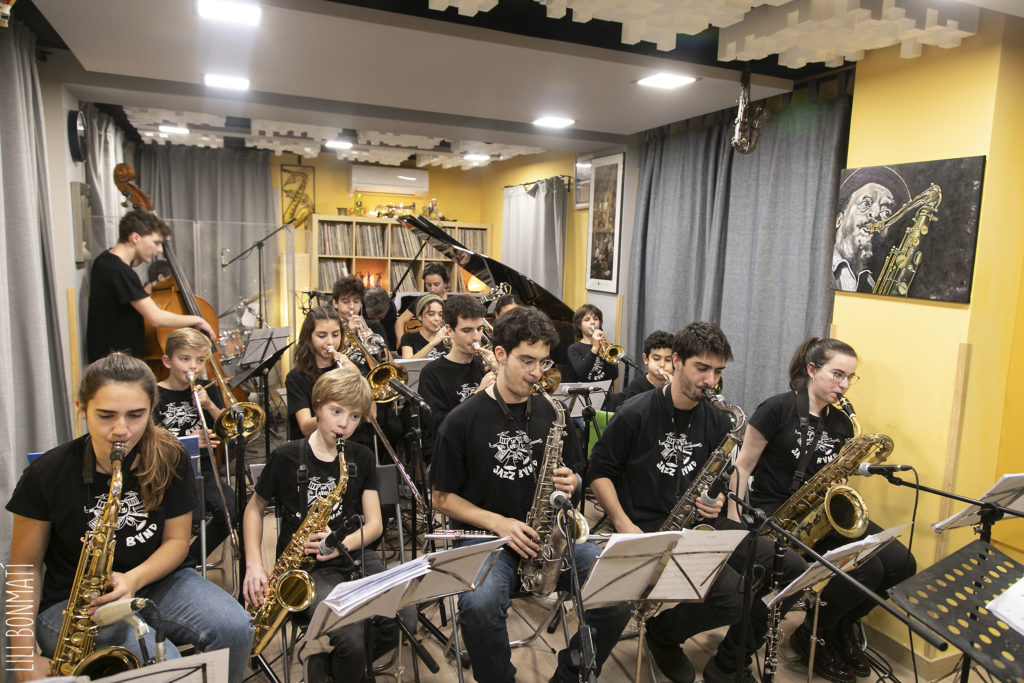
Even if one forces a distinction between current and former SAJB members, I would not exclude the band’s alumni from a broader conceptualisation of “the project”. They carry the music, the ideas and the culture of the project within them – even as they develop in many ways. Yes, even those who do not continue as musicians. It is like when you become adult and move out of the family home. The attributes and traits you aquired growing up in your family never leave you totally. If not earlier, you realise this when you become old. In that and many other respects, SAJB is like a family. Even when you grow up and build a life of your own, you are to some extent still a “family member”. In this wider perception of “the project”, the musician never leaves it totally.
Many professionals collaborate with SAJB – some on a more permanent basis, some now and then. They are impressed by the young musicians. Are these professionals part of “the project”? Obviously, they are while collaborating, but maybe the professionals can utilize these experiences in their other activities. Where does the project then end?
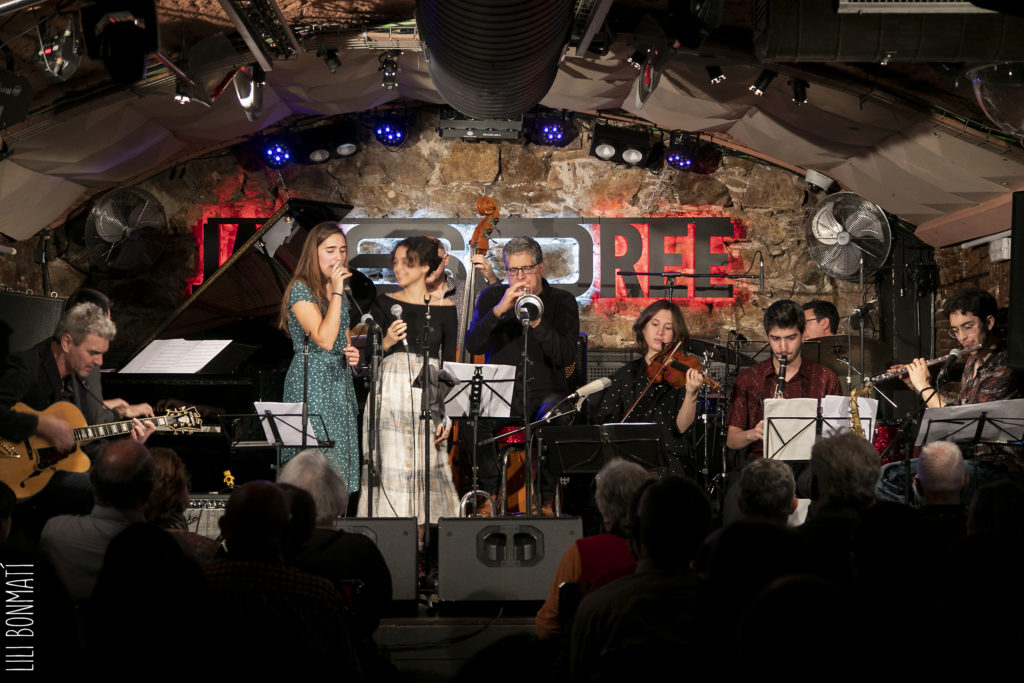
However, band members and professional musicians are not the only ones important to “the project”. Several other contributors also belong, for instance those who provide Joan and SAJB with the music arrangements that are so very important to our enjoyment of their music. The producers of beautiful music videos, CDs, movies and photos are also part of the project. If these high-quality documentations had not existed, fans globally could not have found and enjoyed SAJB, as we are fortunate to do. I should also mention the growing importance of the project support connected to performances, information and administration.
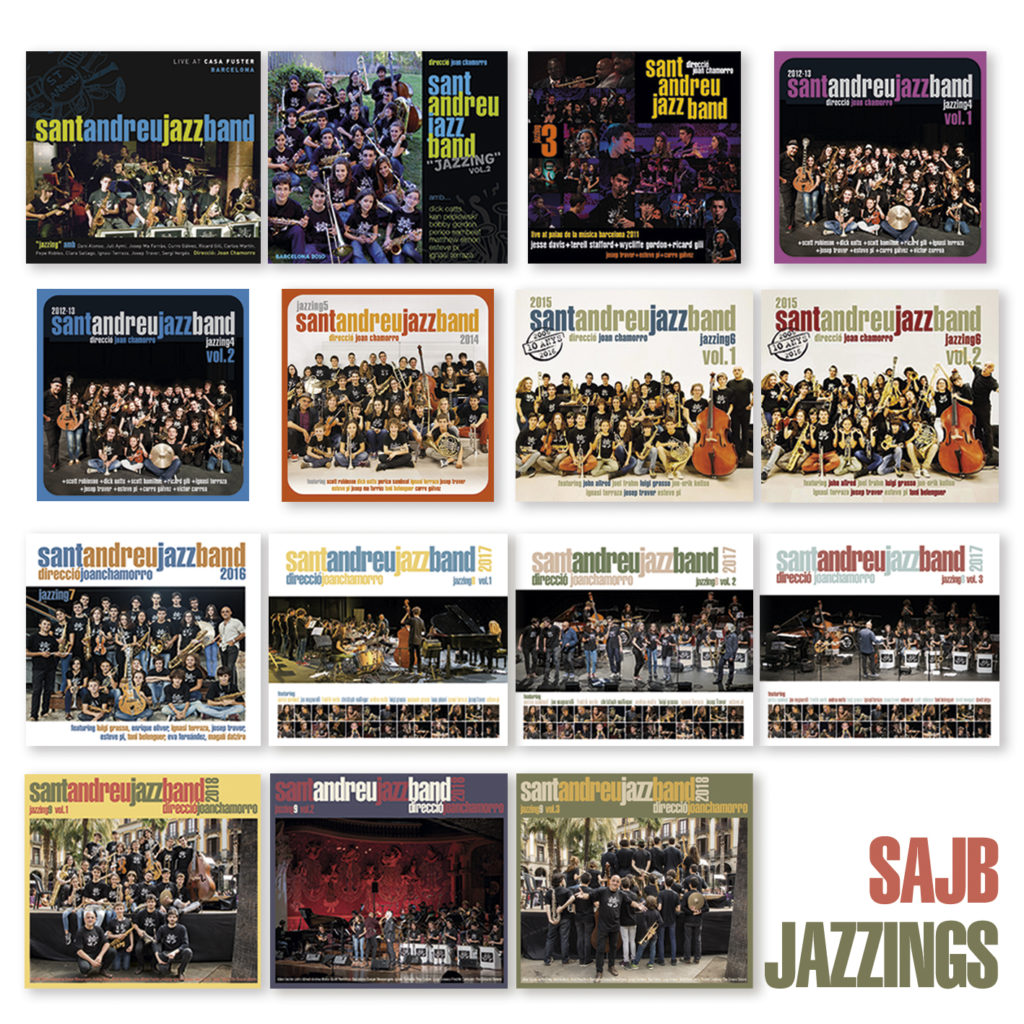
So, what about us, the fans? This article started out from our love of the Sant Andreu Jazz Band but I would rather say that we love the broader less delineated “Sant Andreu Jazz Band project”. Because of our love, we, the fans, almost every day enjoy YouTube videos and/or albums by the big band or other line-ups connected to the SAJB network – and we spread the word and the music to friends and contacts on social media. We happily enrol ourselves in an informal “information service” of SAJB. In a way we actually become part of “the project” when we embrace it and tell the world about it.
Indications of love
Who are “we”, and what are the indicators of our love? Naturally, the fans of Sant Andreu Jazz Band are primarily to be found among people who like jazz, particularly the kind of jazz that the band plays. This probably means that the fans tend to be older rather than younger. Moreover, the fans are, as jazz lovers in general, scattered around the world, though many of them naturally can be found in Spain, SAJB’s home country. However, according to the Internet statistics connected to my music service Musik.pm, the band also has many fans in North and South America, Europe and Asia.
The fact that its many fans are scattered around the world means that the band does not receive a very strong attention in any one country, outside Spain. However, to have fans in many countries adds up to the total amount of attention that the band actually receives.
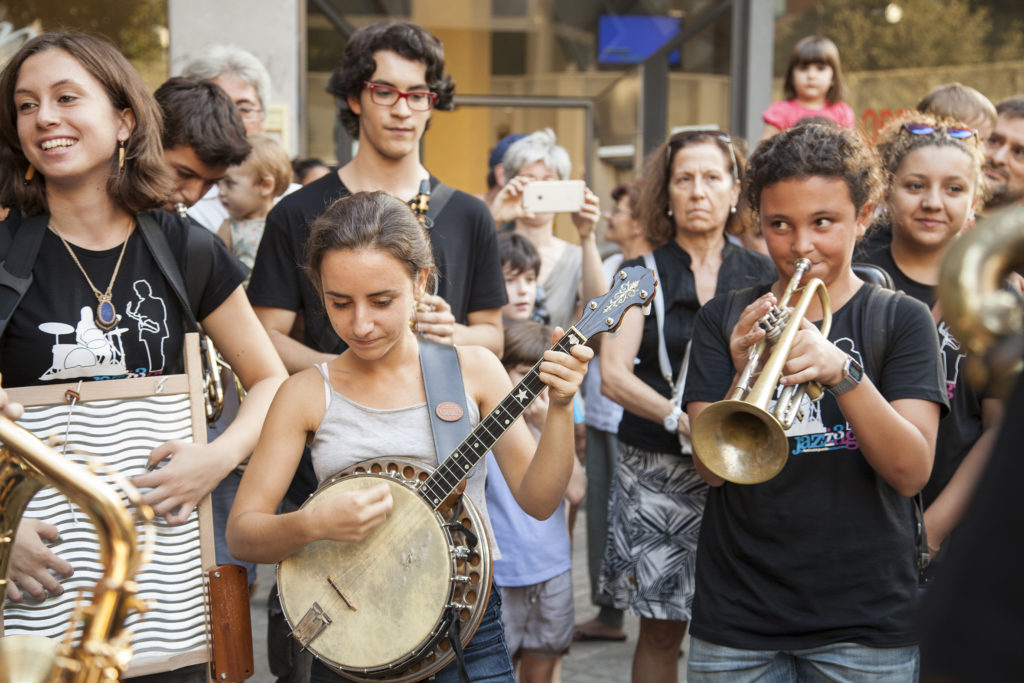
SAJB performs a lot in and near Barcelona, and those performances of course receive attention there. However, many foreign fans travel to Barcelona to experience the band on location. From time to time, the band also performs in other countries. As you can find fans of SAJB among jazz lovers who are in the position to be able to arrange tours, festivals and single concerts (which, testifying to the quality of the band, shows that some of its fans are influential in the jazz world), the band gets access to clubs and concert halls in different countries. Other evidence of love lies in the multitude of posts, “likes” and enthusiastic comments on social media and YouTube, not least reactions to the band’s and Joan Chamorro’s own posts. Some fans confess that they did not listen to jazz a lot before they found SAJB, but now they “cannot live without them”. Obviously, there are both “jazz veterans” and “jazz beginners” among SAJB fans. I would place myself somewhere between those two groups. I enjoyed jazz before I found SAJB, but Joan Chamorro and SAJB has deepened my knowledge about and love for jazz.
You can also find a number of very positive articles about the band on the Internet. I have myself received a lot of positive response to my articles on Musik.pm. Through these messages, I have gained new contacts and music friends in different countries, united in our love of SAJB. We share video links, concert dates and other things related to the band. There are also two Facebook groups with enthusiastic members, one in French and one in English. (Amis du Sant Andreu Jazz Band and Friends of Sant Andreu Jazz Band.)
I have sometimes confessed that I have one “problem” with SAJB. The rich variety of musicians, songs and genres, and the enormous amount of well-produced recordings sometimes leave little time to enjoy other music. Actually, it is not only a question of time; in fact, I often do not have a strong need for other music. Some fan friends admit they have the same “problem”. As an indication of our appreciation of SAJB, a Finnish friend and I once concluded, “Imagine that we would have the opportunity to experience a thing like SAJB in our lifetime!”
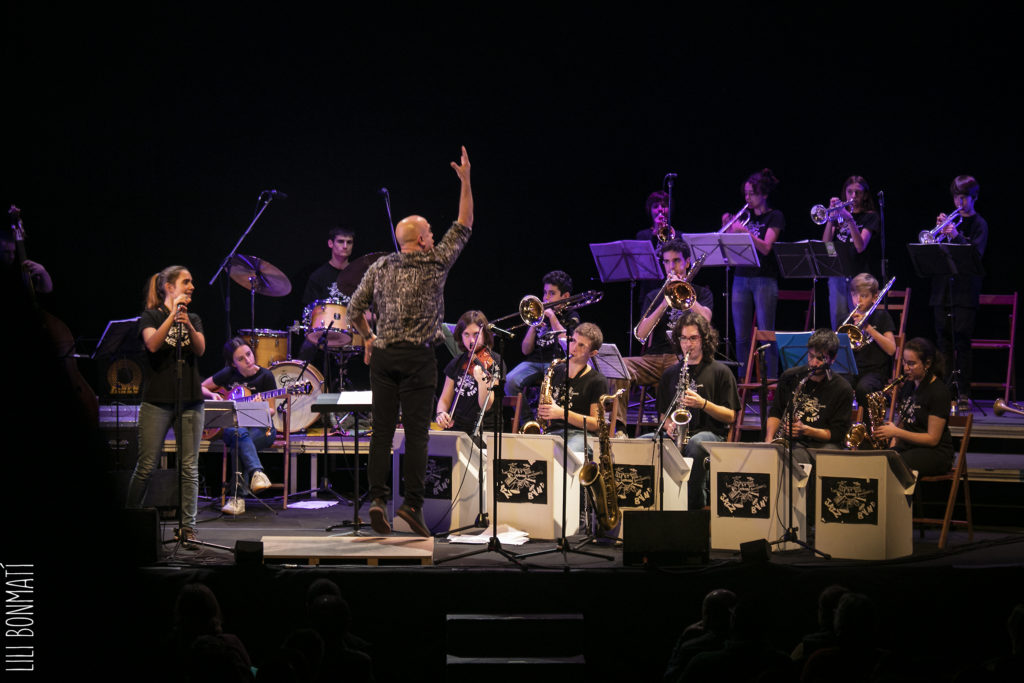
To explain love
So why do the fans love SAJB? As I have not done a survey, I can only propose a theory – a theory built on my observations and analysis of the phenomenon “the Sant Andreu Jazz Band project”. You can find the basis for this theory in my earlier articles, not least in “The Sant Andreu Jazz Band formula” and in the portrait of Joan Chamorro.
I feel at home in my theory, but maybe not everyone does. You will have to judge for yourself what parts of my theory best describe the reasons for your own love – or maybe what you think is wrong or missing in the theory. This is how it goes.
Musical quality
The fans of course love the band because its performances and recordings are of an astonishing and surprisingly high quality. This does not mean that everyone in every way performs like an experienced professional all of the time, but as a whole, the quality is amazing. Moreover, the quality of the individual members and of the band as a whole develops all the time.
It is not my impression that, from the start, the young musicians were musical wonder kids, such as the ones we sometimes see on YouTube, for instance, playing Mozart technically brilliantly on a grand piano at the age of four. Why should there be a concentration of such musical wonder kids in one particular district of Barcelona? Of course, they had talent, maybe some more than others, and many have had formal musical education before and alongside their life in SAJB. However, inspirational and hard work within SAJB does something great with all these young musicians.
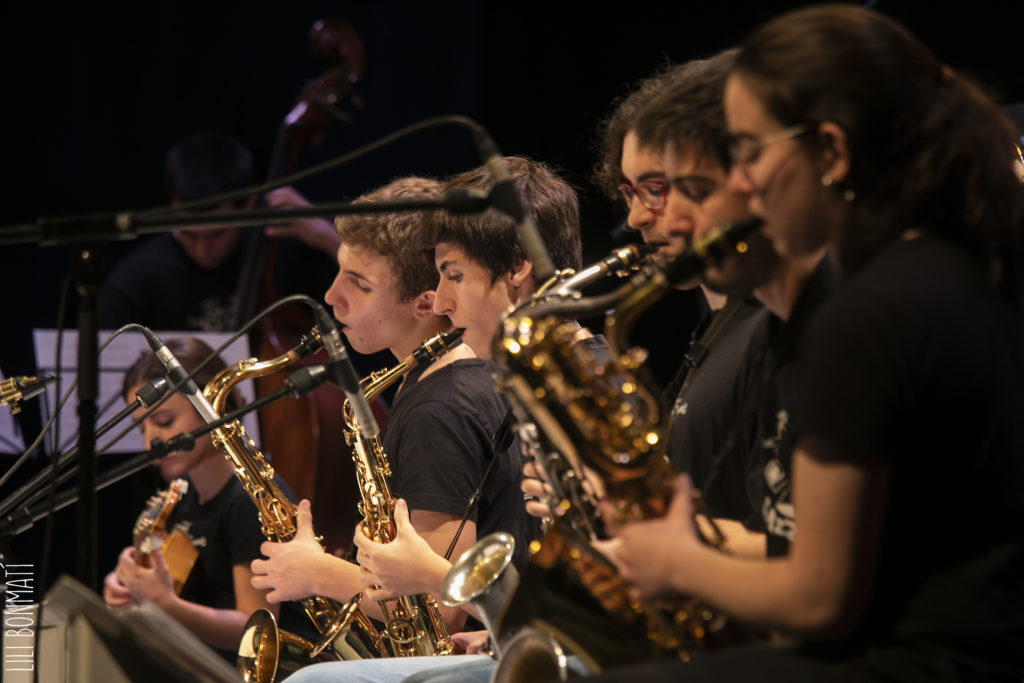
The joy of observing development
When you follow SAJB on YouTube, you can watch band members grow, both in age and as musicians. If you follow the band as closely as many of the fans do, you sometimes feel as if you were an older, distant relative. Comments on YouTube or social media can go “How he has grown!” or “How young she was when she did that recording!” You almost feel like you are part of a big family watching this development happen. Apart from these heart-warming, family-like emotions, it is very enjoyable and interesting to follow the development of young musicians. This is to me, and probably also to many other fans, an important reason for looking around for SAJB videos from different years.
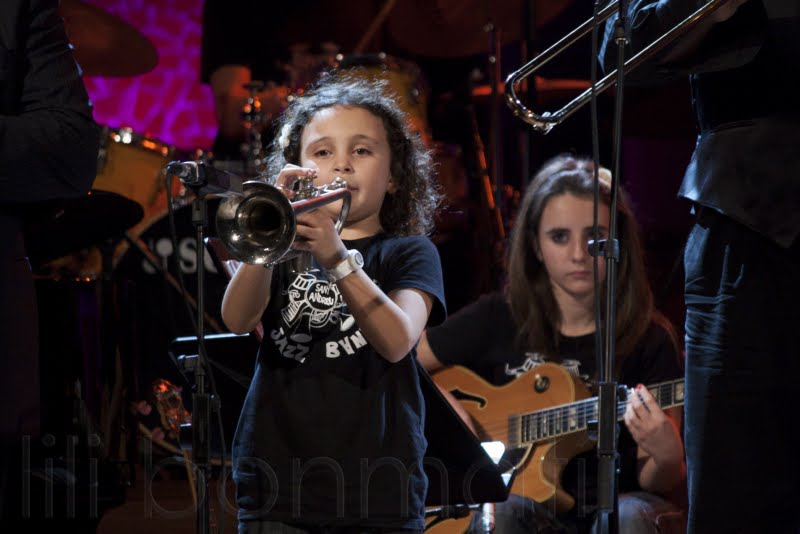
The human and social dimension
The musical training within SAJB has some specific and very interesting features. This training has been very successful. However, there is something more to the project; another dimension that I believe is very important. This other dimension is a cluster of human and social features. I claim that you need to understand both dimensions of “the project” to understand what it actually is that you love. When you understand the project, you realise that there is something more than the music to love, however good that music is. Moreover, if this “more” had not been there, the music would probably not had been as good as it is.
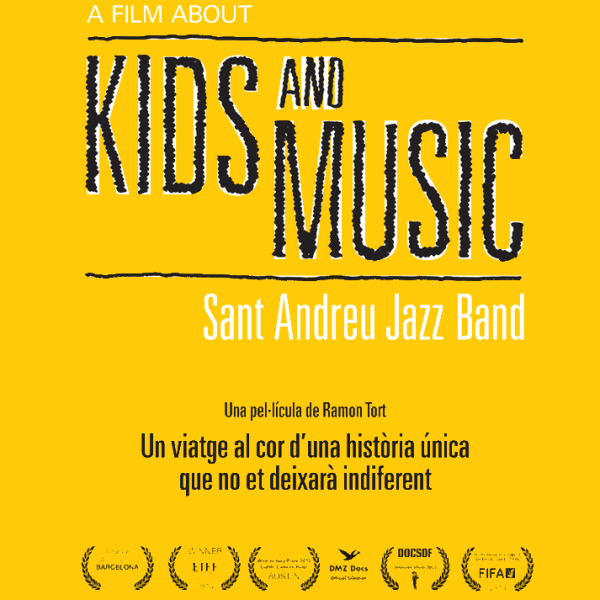
To start with, I return to the original basic statement of the project, as spelled out at the end of Ramón Tort’s documentary Kids and Music, la Sant Andreu Jazz Band (2012).
Driven and directed by Joan Chamorro, the orchestra aims to educate children from 7 to 18 years old both as musicians and as people.”
The key words are “both as musicians and as people”. From the start, Joan set these two, mutually supportive ambitions for the project. You can appreciate either ambition separately, but their development rely on each other – musical development enhances the human and social development, and vice versa.
The musical qualities are obvious for anyone to hear, but the human and social qualities might escape you if you are not attentive. When I interviewed Joan and the musicians Èlia Bastida and Carla Motis, preparing the article “The Sant Andreu Jazz Band formula”, I caught a glimpse of these qualities and phrased it like this:
My hypothesis is that these settings indicate an important cultural dimension of the success formula of the band. Music, people, sharing and cooperation lie at the centre of the band’s focus, not image building, glamour and other surface phenomena.” (The Sant Andreu Jazz Band formula, Musik.pm 2018)
Among the features of the method that Joan told me about in that interview, there were two principles that I should mention in this context.
The positive energy of the group: The younger learn from the older and you are perceived as important regardless of the size of your contribution. And eventually the younger become more experienced and take on the roles of seniors and role models.”
To make the project sustainable over time, it is important that seniors stay in the band and are willing “to give back” what they have received as juniors, and many do so.
The sense of presence: When you play you have to be there, not somewhere else. You have to be in the music and together with the others in the group. You must not observe yourself from the outside, from the views of spectators or a camera. The spectators or the camera might not be there, but you could anyway observe yourself from that kind of perspective, and such preoccupation would split your focus.” (The Sant Andreu Jazz Band formula, Musik.pm 2018)
I believe these features are an important base for the love of the band. They help its members to concentrate on the music and to cooperate within the band. As a result, the music gets better, for us to love, but we also love the human and social qualities in themselves. Part of the band’s charm is that its members radiate these qualities. Many who have met Joan Chamorro and/or members of SAJB have witnessed their kindness and generosity.
Sant Andreu Jazz Band comprises members of very different ages. I believe an age mix generally helps development. I have myself been part of youth organizations, led by a few adults, where members were of very different ages. The older members in some ways share the leadership with the adults, but they also share the member status with the younger. The band also comprises both female and male members.
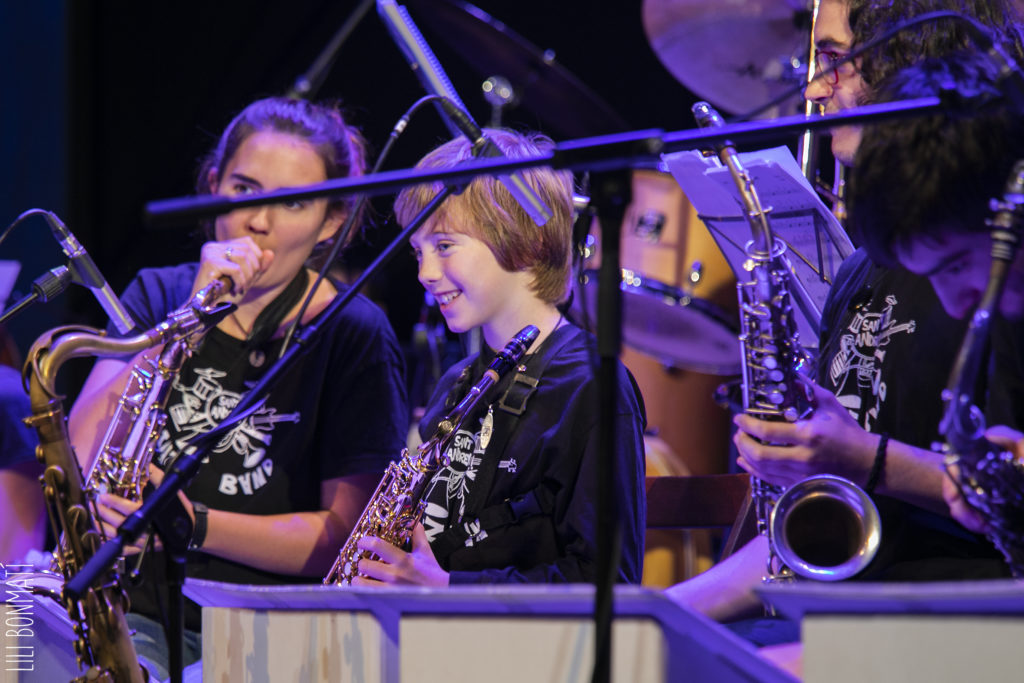
Not being homogeneous in terms of age and gender, the organization becomes a small community organized to achieve a common purpose. The more the purpose is visible, practical and shared, the more successful the organization. The Sant Andreu Jazz Band has a very visible and practical purpose – to develop musically and from time to time show its musical standard in performances – and the result depends on how the members can build the quality together. Everyone is important to the common result, and they all develop as musicians and as people.
Joan Chamorro
What about Joan Chamorro? Does he benefit from working with the project of Sant Andreu Jazz Band? I am quite sure he does. In my portrait of Joan, I conclude that “Joan creates the project and the project creates Joan in a spiral of mutual development.” (Joan Chamorro, Musik.pm 2019.) This is probably what could happen to all of us in our life projects. We put things into action, and if we deal with the results of the action in a creative and constructive way, we develop.
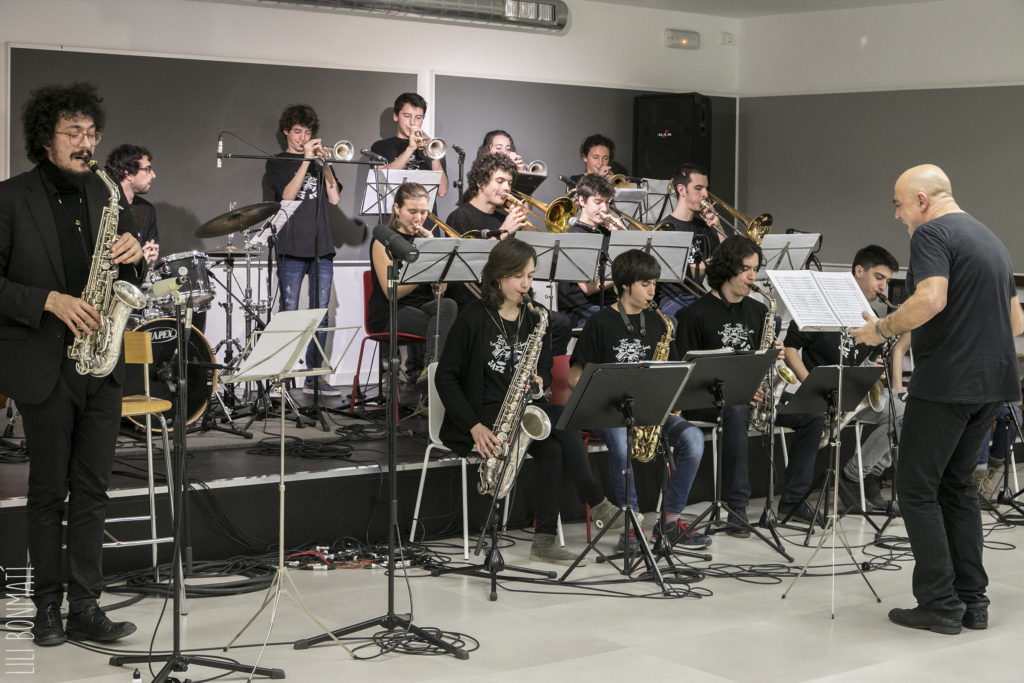
In a comment on Facebook, someone once said that an important success factor for SAJB is that it has a senior musician who sacrifices himself to fulfil the task of being the bandleader. However, anyone who knows Joan Chamorro knows that he absolutely does not see his task as a sacrifice! On the contrary, leading and developing SAJB is very important to him as a person. It is his mission in life and a part of his identity. The success of SAJB must also be very rewarding. Moreover, within his work with SAJB, he gets to play with some very interesting professional musicians.
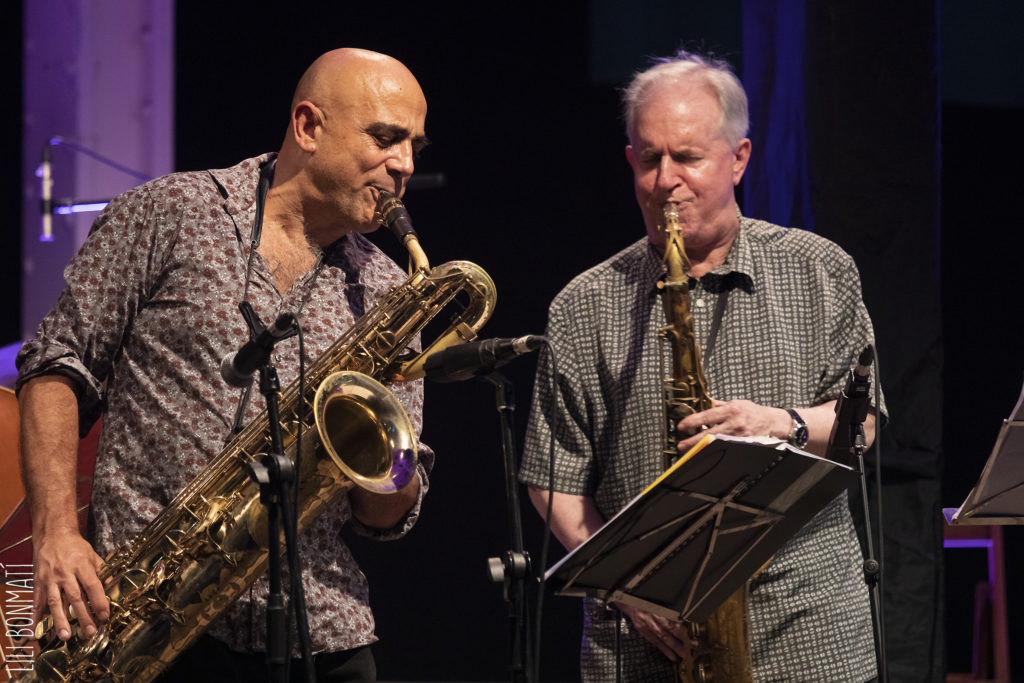
Individuals
Mentioning the importance of individuals, we should not overlook the importance of every individual young musician in Sant Andreu Jazz Band, their skills and their readiness to contribute to the positive energy of the group. According to the principle of including both current and former band members in the definition of “the project”, this statement includes everyone from the original eight to all current members. They are all part of a living and sustainable music culture that goes on and on, creating new experiences for us to enjoy.
An ideal society?
The project of the Sant Andreu Jazz Band seems to me to form a sort of “ideal society” – a community where everyone gets the opportunity to develop with the help of the leader, fellow band members and external professionals. There is no requirement that everyone develops at the same pace. With their own efforts and the support received, everyone can develop according to their own capacity.
You can observe the dynamics of the band through how soloist parts are distributed. Normally the senior band members take on most of the soloist parts, but then again, they sometimes sit back to support younger members. In a few years, the young ones will have succeeded the old ones and taken on their roles.
As stated above, the human and social aspects of the project have a value of their own, but they also enhance the quality of the music. In my view, the result is music with a special kind of spirit and a strong community that I have rarely seen elsewhere. We can appreciate the band members’ shared joy of playing together, but also their discipline, ambition and mutual support.
These features tell us something important about the SAJB project. However, since we love the band, they might also tell us something important about us, the fans. Maybe the human and social aspects of the Sant Andreu Jazz Band project form a kind of community we would all like to be part of.
_____
Music videos
In 2009, the album “Sant Andreu Jazz Band Live at Casa Fuster” was released. It would become the first in a long series of SAJB albums called “Jazzing”. Until today, there has been 16 “Jazzing” releases, and more will come. There are also many SAJB albums featuring different individual SAJB musicians. There is a lot of wonderful music to discover on all of these albums!
This is a sample of songs from the Jazzing series.
Jazzing 1 (Live at Casa Fuster, Barcelona)
Some of These Days / Cute / Petite Fleur / Bill Bailey
Jazzing 2
Harlem Air Shaft / Koko / I found A New Baby
Jazzing 3 (Live at Palau de la Música, Barcelona 2011)
Easy Money / Boogie’s Blues / All Too Soon / Si Tu Vois Ma Mère / Pouttin’
Jazzing 4, vol. 1
Exactly Like You / Minor Swing / Jeep’s Blues / Mood Indigo / Pretty Trix
Jazzing 4, vol 2
Vip’s Boogie / A-Tisket A-Tasket / Royal Garden Blues
Jazzing 5
Rosetta / West Coast Blues / I Can’t Get Started / Lush Life / It Don’t Mean a Thing / Feeling Good
Jazzing 6, vol. 1
Is You Is or Is You Ain’t My Baby / What a Little Moonlight Can Do / Easter Parade / From This Moment On / Moanin’
Jazzing 6, vol. 2
Wave / Sister Kate / Lotus Blossom / Jordu / Anthropology
Jazzing 7
Almost Like Being in Love / Recado Bossa Nova / I’d be There / Unchain My Heart / Triste / After You’ve Gone / Since You’ve Been Gone
Jazzing 8, vol. 1
The Elder / What’s New / Mike’s Peak / Baby, You’ve Got What It Takes / Souvenir / Bebop / Count Bubba
Jazzing 8, vol. 2
Mood Indigo / Jazz Goes to Siwash / Nap’s Dream / Blues Generation
Jazzing 8, vol.3
Groove Merchant / Grey Flannel / Whisper Not / Spaceman Twist
Jazzing 9, vol. 1
The Good Life / No Moon at All / Donna Lee / On the Sunny Side of the Street / Le Coiffeur / So What / Blue Gardenia
Jazzing 9, vol. 2
Deeper / Yearnin’ / Stardust Shine / I’ll Be Seing You / Doodlin’
Jazzing 9, vol. 3
Peggy’s Blue Skylight / The Preacher / Billie’s Bounce / Portrait of Jenny
Jazzing 10, vol. 1 (Tribute to Clifford Brown)
Laura / Jim / Can’t Help Lovin Dat Man / Brown Skins / Falling in Love with Love / Daahoud / I Remember Clifford /
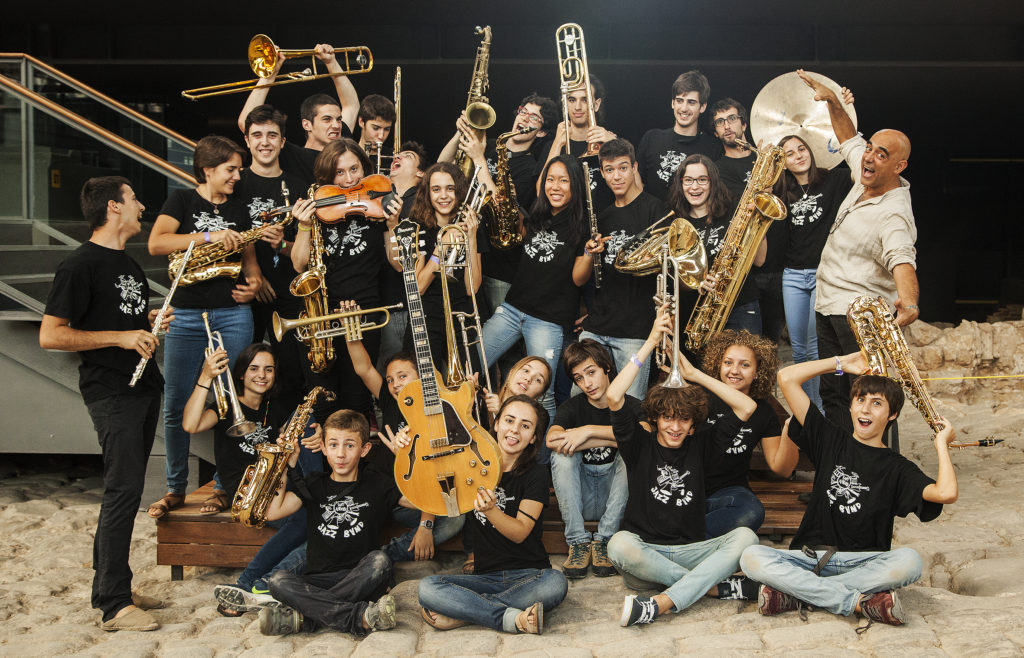
____
Related posts
To be sincere (May 30, 2020)
Joan Chamorro New Quartet (February 3, 2020)
Joan Chamorro (August 9, 2019)
Èlia Bastida (May 24, 2019)
Added reflections on The Sant Andreu Jazz Band formula (January 3, 2019)
The Sant Andreu Jazz Band formula (October 26, 2018)
La Màgia de la Veu & Jazz Ensemble (July 8, 2017)
Sant Andreu Jazz Band live (April 30, 2017)
Sant Andreu Jazz Band (September 22, 2016)
